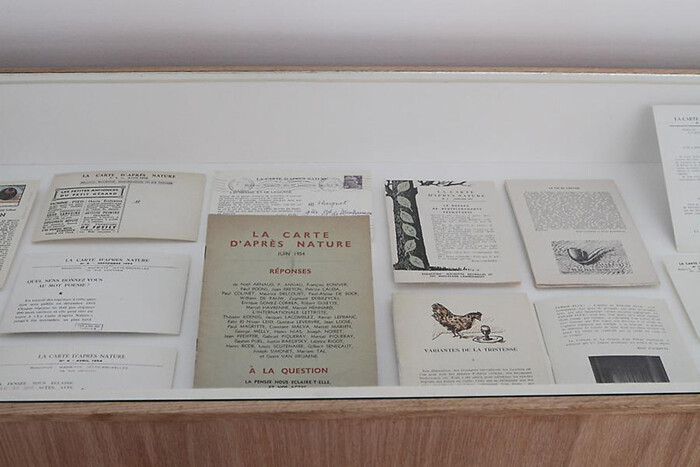Categories
Subjects
Authors
Artists
Venues
Locations
Calendar
Filter
Done
May 13, 2024 – Review
Vija Celmins’s “Winter”
R.H. Lossin

Vija Celmins’s latest show is at once an invitation to marvel at the perfect copy and to contemplate copying itself. The heavy rope that seems to hang down from the gallery ceiling is, in reality, a stainless-steel sculpture extending up from the ground (Ladder, 2021–22). Its adjunct, another piece of painted steel, Rope #2 (2022—24) sits coiled on the floor, playing its role as a fiber weave with equal conviction. The ropes, along with two other sculptures of exquisite verisimilitude, are enthralling in their own right. They also remind visitors that the surrounding paintings, which can easily register as minimal abstractions, are exercises in illusion and replication as well.
Umberto Eco once declared the United States to be a country “obsessed with realism, where, if a reconstruction is to be credible, it must be […] a perfect likeness, a ‘real’ copy of the reality being represented.” This cultural propensity for real fakes, Eco suggests, is at odds with the “cultured” America that produced Abstract Expressionism and modernist architecture. Celmins seems to think otherwise. “Winter” is full of Eco’s real copies, and Ladder may even be a reference to the “Indian Rope Trick” popular in magic shows. On the other hand, …
September 11, 2018 – Review
Vincent Fecteau
Fanny Singer

Nature has a habit of reproducing its best engineering––why reinvent the circuitry of veins if you have their blueprints in the roots and branches of trees, in the shapes of rivers flowing from tributaries? Fractal patterns are iterated everywhere: in succulents, cauliflowers, snail shells. Vincent Fecteau’s sculptures, too, feel borrowed from natural forms such as grottoes and caves. In fact, there is something rather grotesque about them: organic nooks and stalactite-like shapes coalesce into liminal, terrestrial landscapes.
In the main room of Fecteau’s current solo exhibitions at Matthew Marks’s Los Angeles space, four sculptures sit on plinths ringed sparsely by four wall-mounted collages while a second, smaller gallery brings together a single sculpture with a single collage (all of the works are untitled). Collages previously shown in 2014 at Marks’s New York gallery are reunited with others from the same period, and brought together for the first time with sculptures made for an exhibition at Vienna’s Secession in 2016. The juxtaposition of pieces from different moments and contexts affords the viewer an opportunity to consider how Fecteau’s two dominant mediums––which can read as distinct conceptual and formal strands––have been in critical dialogue over the last several years.
In his 2014 exhibition at …
September 6, 2011 – Review
"La Carte d’après Nature" An exhibition curated by Thomas Demand
Adam Kleinman

Can an exhibition be too tight? Such is the question when experiencing the immersive world of “La Carte d’après Nature,” a group show curated by Thomas Demand currently on view at Mathew Marks, which debuted in late 2010 with a few variances at Nouveau Musée National de Monaco.
The exhibition itself takes both its name and its inspiration from a short-lived journal published by René Magritte in the late 1950s and early 60s. A quasi-retake on the exquisite corps, Magritte set in motion a correspondence game where picture postcards were mailed to friends so as to spur short replies in the form of associative thoughts, sketches, and clippings. These source materials, part found object, part commentary, were edited by Magritte into a pamphlet which overlapped streams of thought and mood. Building on this methodology, Demand instead looked to a trans-historical collection of artists and architects so he could create an exhibition in the form of a daisy-chain essay. The topic? Its main thrust is the “domestication of nature.” As such, many of the works focused on photographs of potted plants and gardens; however, each representation held a kind of fanged “surrealist” attitude.
If a surrealist take on the domestication of nature is …